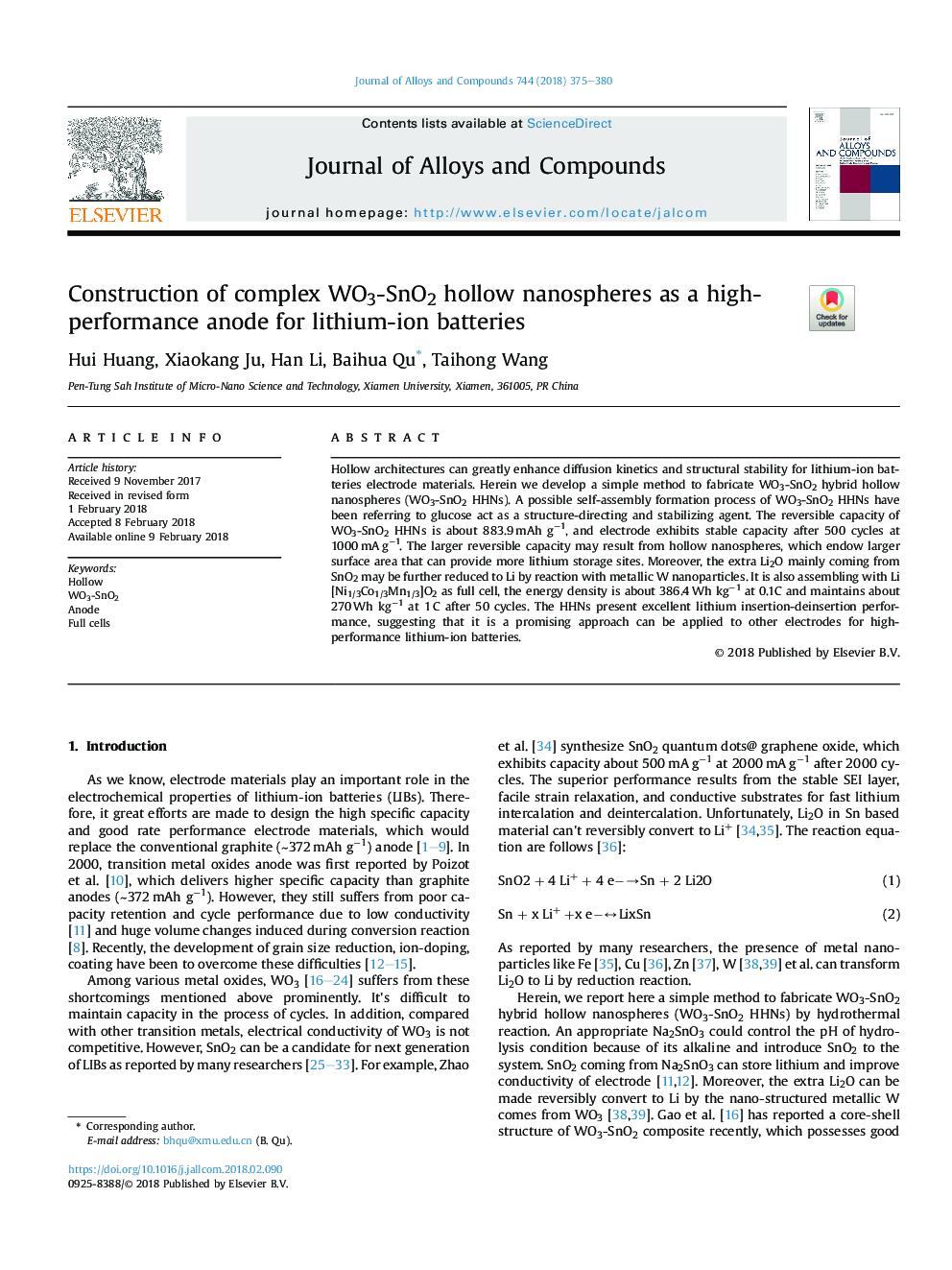| Article ID | Journal | Published Year | Pages | File Type |
|---|---|---|---|---|
| 7992949 | Journal of Alloys and Compounds | 2018 | 6 Pages |
Abstract
Hollow architectures can greatly enhance diffusion kinetics and structural stability for lithium-ion batteries electrode materials. Herein we develop a simple method to fabricate WO3-SnO2 hybrid hollow nanospheres (WO3-SnO2 HHNs). A possible self-assembly formation process of WO3-SnO2 HHNs have been referring to glucose act as a structure-directing and stabilizing agent. The reversible capacity of WO3-SnO2 HHNs is about 883.9â¯mAh gâ1, and electrode exhibits stable capacity after 500 cycles at 1000â¯mAâ¯gâ1. The larger reversible capacity may result from hollow nanospheres, which endow larger surface area that can provide more lithium storage sites. Moreover, the extra Li2O mainly coming from SnO2 may be further reduced to Li by reaction with metallic W nanoparticles. It is also assembling with Li[Ni1/3Co1/3Mn1/3]O2 as full cell, the energy density is about 386.4â¯Wh kgâ1 at 0.1C and maintains about 270â¯Wh kgâ1 at 1â¯C after 50 cycles. The HHNs present excellent lithium insertion-deinsertion performance, suggesting that it is a promising approach can be applied to other electrodes for high-performance lithium-ion batteries.
Keywords
Related Topics
Physical Sciences and Engineering
Materials Science
Metals and Alloys
Authors
Hui Huang, Xiaokang Ju, Han Li, Baihua Qu, Taihong Wang,
